In 2019 I challenged myself to read a book a week – and hit 52. In 2020, I managed more than 70. I’m looking forward to trying to match that in 2021!
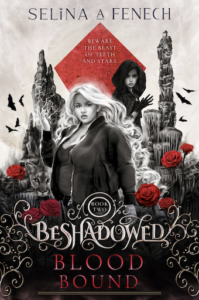 My first June read was Blood Bound, book two of the Beshadowed series by Selina A Fenech (29 of 52), and it’s as awesome as the first one. Totally gripping and suspenseful, with wonderful characters, terrifying villains, a little more of the mysterious creatures and world revealed, and its fast pace swooping between laugh-out-loud hilarious then deeply serious and back again. There’s a touch of horror, but I’m a total wuss and I coped. Like the first book, there are many wonderful – but subtle – messages of equality and diversity, but it’s just part of the rich, imaginative world the author has created. The characters are fully formed, complex, funny, flawed, brave and vulnerable, and its beautifully written, magical and intriguing – with enough of a cliff-hanger to make me (and my hubby!) eager for book three.
My first June read was Blood Bound, book two of the Beshadowed series by Selina A Fenech (29 of 52), and it’s as awesome as the first one. Totally gripping and suspenseful, with wonderful characters, terrifying villains, a little more of the mysterious creatures and world revealed, and its fast pace swooping between laugh-out-loud hilarious then deeply serious and back again. There’s a touch of horror, but I’m a total wuss and I coped. Like the first book, there are many wonderful – but subtle – messages of equality and diversity, but it’s just part of the rich, imaginative world the author has created. The characters are fully formed, complex, funny, flawed, brave and vulnerable, and its beautifully written, magical and intriguing – with enough of a cliff-hanger to make me (and my hubby!) eager for book three.
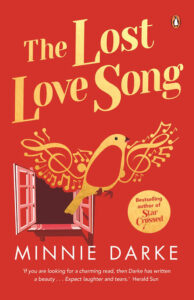 I loved Minnie Darke’s The Lost Love Song (30 of 52) even more than her Star-Crossed novel, which was also wonderful. It’s a “captivating feel-good love story” – but it’s also sad and tender and a little heartbreaking, in a beautiful way. It’s cleverly woven together too, with so many unconnected people introduced, and their seemingly disparate lives eventually touching in some way. The audiobook’s great, very engaging. I love narrator Arianwen Parkes-Lockwood (I got this one, as well as Kayte Nunn’s The Forgotten Letters of Esther Durrant because I loved her narration on Star-Crossed), and I got used to the male narrator who did the other half eventually…
I loved Minnie Darke’s The Lost Love Song (30 of 52) even more than her Star-Crossed novel, which was also wonderful. It’s a “captivating feel-good love story” – but it’s also sad and tender and a little heartbreaking, in a beautiful way. It’s cleverly woven together too, with so many unconnected people introduced, and their seemingly disparate lives eventually touching in some way. The audiobook’s great, very engaging. I love narrator Arianwen Parkes-Lockwood (I got this one, as well as Kayte Nunn’s The Forgotten Letters of Esther Durrant because I loved her narration on Star-Crossed), and I got used to the male narrator who did the other half eventually…
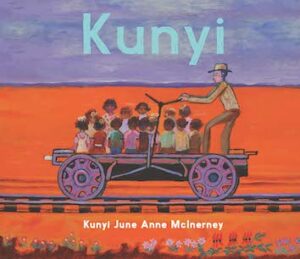 Love and gratitude to Kunyi June Anne McInerney for her generosity in sharing her story – and the stories of so many others – in her beautiful illustrated book Kunyi (31 of 52). This Yankunytjatjara artist and storyteller was only four when she was torn away from her parents and sent to the Oodnadatta Children’s Home in South Australia, one of the Stolen Generation. It devastates me that so many Aboriginal children were stolen from their parents. That it happened at all, and that it went on for so long – from 1910 to the 1970s. The trauma from this shameful policy continues to this day, for so many First Nations people, which breaks my heart. Yet I’m so glad that books like this exist, as a reminder of the worst parts of humanity, and an honouring of all those who suffered so much.
Love and gratitude to Kunyi June Anne McInerney for her generosity in sharing her story – and the stories of so many others – in her beautiful illustrated book Kunyi (31 of 52). This Yankunytjatjara artist and storyteller was only four when she was torn away from her parents and sent to the Oodnadatta Children’s Home in South Australia, one of the Stolen Generation. It devastates me that so many Aboriginal children were stolen from their parents. That it happened at all, and that it went on for so long – from 1910 to the 1970s. The trauma from this shameful policy continues to this day, for so many First Nations people, which breaks my heart. Yet I’m so glad that books like this exist, as a reminder of the worst parts of humanity, and an honouring of all those who suffered so much.
Kunyi’s life was filled with trauma, pain and loneliness, and through her vibrant paintings and the tender stories that accompany them, she gives us valuable insight into this shameful part of our nation’s history, while paying tribute to all who were stolen – and all the loving parents who were stolen from. But, growing up to be a nurse and midwife as well as a successful self-taught artist and writer, Kunyi also tells of resilience and healing. Her memoir is sad yet very moving, a sensitive exploration of cultural loss, separation and survival, and finding happiness amongst hardship. Told with great courage and honesty, it is an important read for all Australians.
South Australian friends, Kunyi is sharing her story at an In Conversation event at Aldinga Library on August 7 xx
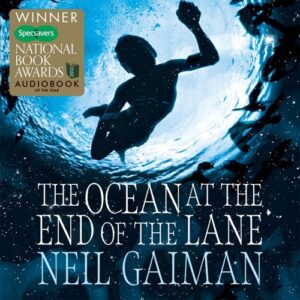 The Ocean at the End of the Lane by Neil Gaiman (32 of 52) is a faery tale of sorts, with all the grim suspense and dawning horror of classic Grimm tales. It was a teensy bit creepy (I’m a wuss though!), and for a while I wasn’t sure I could/should continue, but I’m glad I did. There’s a sweet magic to it too, and I loved the Hempstock women and their kind enchantment. The audiobook was read by the author too, which was a wonderful choice. I admire any writer who can perform too!
The Ocean at the End of the Lane by Neil Gaiman (32 of 52) is a faery tale of sorts, with all the grim suspense and dawning horror of classic Grimm tales. It was a teensy bit creepy (I’m a wuss though!), and for a while I wasn’t sure I could/should continue, but I’m glad I did. There’s a sweet magic to it too, and I loved the Hempstock women and their kind enchantment. The audiobook was read by the author too, which was a wonderful choice. I admire any writer who can perform too!
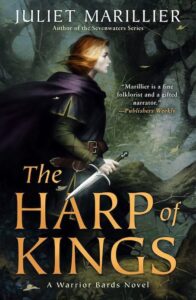
The last few years I haven’t re-read any books, cos I have SO MANY unread on my shelf that I’m still to begin. But my favourite author Juliet Marillier’s new novel A Song of Flight, the third in her Warrior Bards series, is out soon, so I had to read the first one again! And it was wonderful to fall back in to the beauty of the spellbinding book one, The Harp of Kings (33 of 52). It’s such a magical, mysterious, beautiful, bittersweet, action-packed, adventurous, lyrical and hope-filled novel, blending myth and legend so enchantingly, and with characters endearingly flawed and aware of their weaknesses, while developing incredible inner strength over the arc of the story.
I love these lines from it: “And there is a greater magic, a power that comes from the very land we tread, from ocean and forest, from the deepest cavern to the high pathways of sun and moon. When the path ahead seems dark and difficult, when you cannot find the right way, call on that power to guide you, for within each of us, even the smallest, there is a spark of that great fire…”
From Publishers Weekly: “This breathtaking, often heartbreaking Celtic-flavoured fantasy novel couches a challenging quest in storytelling both earthy and unearthly … Most satisfying is her ability to weave multiple strands of narrative into a brilliant tapestry. This lush fantasy is sure to win Marillier many new fans.”
* * *
MAY READS
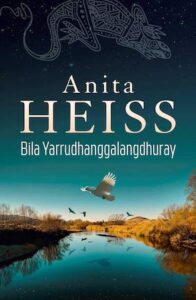
The beautiful, heartbreaking, deeply moving, tragic and love-filled Bila Yarrudhanggalangdhuray by Anita Heiss was my first May read, and I loved it so much. It was my most anticipated novel this year, and I was finally able to buy it at a library talk Anita did as part of the Sydney Writers Festival, a couple of days before release. I read it in days, but I so want to do this novel justice, and was worried that I wouldn’t, that I haven’t posted my review yet. (Will catch up on the other books I’ve read since then soon too!)
I guess I could just say: READ IT! But I’ll try to explain why I think everyone should read this book (and not just Australians, because our history of invasion and colonisation is sadly not unique)…
Bila Yarrudhanggalangdhuray (River of Dreams) is a beautiful story, and a heartbreaking one, and an important one. It’s also a timely one, because the truth of our past is *finally* being talked about, and challenged, and people long to know how far from reality the “history” we learned in school actually is. (Hint: bigger than the vast skies over the Marrambidya Bila, and longer than the river itself.)
On one level this book is a history lesson about the catastrophic flood that swept through the NSW town of Gundagai in 1852, destroying houses and taking the lives of a third of the Europeans who’d built the town, against the advice of the local Aboriginal people, on a floodplain. But it is also an honouring of two unsung Wiradyuri heroes, Yarri and Jacky Jacky, who despite years of terrible treatment at the hands of the European invaders, risked their own lives to save the lives of their oppressors. Between them they rescued a third of the town, and their descendants still give thanks for Yarri and Jacky Jacky’s bravery.
It’s a love story too, between Wagadhaany and her “black sweetheart” Yindyamarra, and between parents and children, and the extended network of relatives, friends and family that is such an important part of Aboriginal life. It’s also a tribute to the connection of First Nations people to the land they are born on and look after, the animals they care for, and the ancestors they remain close to. And while the reprehensible cruelty of the white men’s policies and the laws and actions they inflicted on a people who’d never ceded their land is beyond doubt, all of the characters are richly drawn, even the “bad” ones, and brought to life with great empathy. The relationship between Wagadhaany and her friend/sometimes-ally/sometimes-master Louisa is complex and layered, and good intentions are given credit by the author, up to a point. It is a story of women’s strength too – of the Wiradyuri aunts and cousins who care for Wagadhaany when she’s taken away from her own family, and the white women trying to live on the land and survive in a patriarchal society that oppresses them too – and it’s a story of love, and loss, and the deep yearning for belonging.
I love that Wiradyuri language is used throughout the book too. There’s a glossary at the back, but most of the words are easily understood through context, and it adds a really powerful element to the story. For Anita, learning her language over the past few years and being able to weave it into this story is an act of sovereignty. It’s also a bitter-sweet reminder that for far too long, Aboriginal people were banned from learning or speaking their own language, and practising their own spirituality and rituals, and were torn away from their families, their country and their culture. (And before we congratulate ourselves on our progress, this still continues in many forms today…) Incorporating her language – and being the first commercial novel to have the title on the front cover in a First Nations language only, no English – is a beautiful way to connect back to the past, and back to the knowledge and wisdom and stories that were almost lost, but are slowly being reclaimed.
During her talk Anita mentioned how wonderful it is hearing the Wiradyuri words spoken, so I bought the audiobook too. It’s voiced by Tamala Shelton, my favourite narrator (who also reads Melissa Lucashenko’s Too Much Lip), and it’s beautiful. Sometimes I read the book curled up on the couch, sometimes I listened to the audiobook while I walked, and sometimes I sat and read along while I listened. Towards the end I stayed up half the night to finish the book, then continued listening to the audiobook over the next few days, submerged in the story for a little longer…
In case you skipped to the end – I love this gorgeous book, and have bought several copies for gifts, because I want everyone to read it!
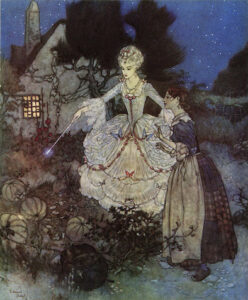 This month’s Australian Fairy Tale Society story was Cinderella and its many variants (26 of 52) – it’s fascinating to trace a modern story back to its roots, from China to France to Germany. We think it’s the Brothers Grimm version that we know today, but it’s not. Their Cinderella has no glass slipper and no faery godmother, no forgiveness of her step-family, and her tears water the tree on her mother’s grave, a tree that gives her a ball gown, and comfort. It’s Charles Perrault’s version, more than a hundred years before the Grimms, that has the glass slipper, the faery godmother, the pumpkin and the forgiveness. (And I could rave on about this for ages, but I won’t!) After a Greek story in 7BCE, and several others, the first European literary version was Italian writer Giambattista Basile’s Cat Cinderella, which came out in 1634 (and was quite gruesome in parts), closely followed by Frenchman Charles Perrault’s version in 1637, with the Grimm Brothers version in 1812… Of the modern versions, I love Lucy Cavendish’s retelling in Magickal Faerytales, Susannah McFarlane’s in Fairytales for Feisty Girls, K. A. Last’s Ella and Ash, and Gail Carson Levine’s Ella Enchanted…
This month’s Australian Fairy Tale Society story was Cinderella and its many variants (26 of 52) – it’s fascinating to trace a modern story back to its roots, from China to France to Germany. We think it’s the Brothers Grimm version that we know today, but it’s not. Their Cinderella has no glass slipper and no faery godmother, no forgiveness of her step-family, and her tears water the tree on her mother’s grave, a tree that gives her a ball gown, and comfort. It’s Charles Perrault’s version, more than a hundred years before the Grimms, that has the glass slipper, the faery godmother, the pumpkin and the forgiveness. (And I could rave on about this for ages, but I won’t!) After a Greek story in 7BCE, and several others, the first European literary version was Italian writer Giambattista Basile’s Cat Cinderella, which came out in 1634 (and was quite gruesome in parts), closely followed by Frenchman Charles Perrault’s version in 1637, with the Grimm Brothers version in 1812… Of the modern versions, I love Lucy Cavendish’s retelling in Magickal Faerytales, Susannah McFarlane’s in Fairytales for Feisty Girls, K. A. Last’s Ella and Ash, and Gail Carson Levine’s Ella Enchanted…
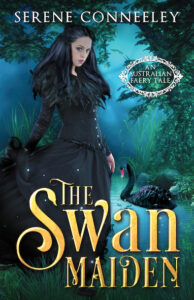
A lot of my reading time was taken up with listening to The Swan Maiden audiobook *several* times (27 of 52), first by one narrator, then another. It’s a fascinating experience to hear someone else speak your words, and interpret your story in their own way…
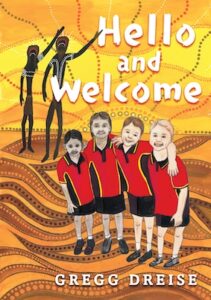
The bright, colourful Hello and Welcome by Gregg Dreise (28a of 52) is a wonderful celebration of Australia’s Indigenous heritage, with gorgeous illustrations by the author. It features some words from the Gamilaraay language of the Kamilaroi people, giving a gentle introduction to the culture of some of our First Nations people, and is wonderfully warm and welcoming. I interviewed Gregg for Australian Geographic: Explorers magazine, which you can read here.
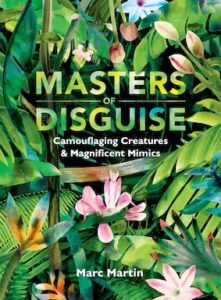 The natural world is full of magic and wonder – like the incredible camouflaging creatures and magnificent mimics in this cool kids book. Masters of Disguise (28b of 52) was written and illustrated by Melbourne artist Marc Martin, and features animals from around the world who have evolved incredible ways to survive in their environment, such as the orchid mantis who looks just like a flower, the Aussie ornate wobbegong whose markings make it appear as seaweed, and the gaboon viper whose head looks exactly like a leaf! There’s a fact-packed spread for each creature that includes images and info, then another spread where you’re challenged to find them hiding amongst the trees and plants or waters of its home.
The natural world is full of magic and wonder – like the incredible camouflaging creatures and magnificent mimics in this cool kids book. Masters of Disguise (28b of 52) was written and illustrated by Melbourne artist Marc Martin, and features animals from around the world who have evolved incredible ways to survive in their environment, such as the orchid mantis who looks just like a flower, the Aussie ornate wobbegong whose markings make it appear as seaweed, and the gaboon viper whose head looks exactly like a leaf! There’s a fact-packed spread for each creature that includes images and info, then another spread where you’re challenged to find them hiding amongst the trees and plants or waters of its home.
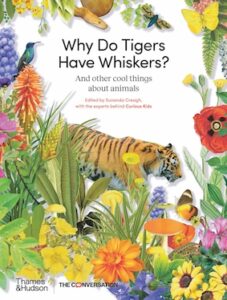 Why Do Tigers Have Whiskers? edited by Sunanda Creagh (28c of 52), is a hardcover book that brings the wonders of science to life, addressing such fascinating questions as whether sharks sneeze, how an echidna breathes underground, and why cats don’t wear shoes. Gorgeously illustrated with a mix of realism and fantasy, it features answers by academic experts in each field, and there’s also a glossary at the end to explain more complex terms, and extra fun facts you’ll be able to impress your friends with.
Why Do Tigers Have Whiskers? edited by Sunanda Creagh (28c of 52), is a hardcover book that brings the wonders of science to life, addressing such fascinating questions as whether sharks sneeze, how an echidna breathes underground, and why cats don’t wear shoes. Gorgeously illustrated with a mix of realism and fantasy, it features answers by academic experts in each field, and there’s also a glossary at the end to explain more complex terms, and extra fun facts you’ll be able to impress your friends with.
And The Physics of Popcorn by Aidan Randle-Conde (28d of 52) is an awesome interactive book about the curious world of kitchen science, which features 22 cool experiments, lots of info, and fun quizzes. Learn about volume and mass by making popcorn, energy and heat by creating a “hot air balloon”, wavelengths by creating a rainbow, gravity by dropping corn kernels and examining baseball, friction and other forces, and so much more! A wonderful, inspiring exploration of physics for primary school (and older) readers.
* * *
APRIL READS
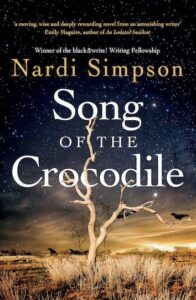
I’m so behind on my book posts, but my first April read was Song of the Crocodile (20 of 52) by Yuwaalaraay storyteller Nardi Simpson, a beautiful, heartbreaking, magical story of love and family, of connection to the land, of the horror of this nation’s past – and the injustice that so tragically continues today. Nardi is a singer and songwriter and musician too – her band Stiff Gins recorded and toured for two decades – and this comes through in the lyrical writing. It’s a moving, wise and engaging book – and I’m looking forward to hearing Nardi, Melissa Lucashenko and Tara June Winch discuss Writing Country at the Sydney Writers Festival next week. It was longlisted for the 2021 Miles Franklin Award, Stella Prize and ABIA Award for Literary Fiction Book of the Year, and is another powerful First Nations story that shares wisdom with us all…
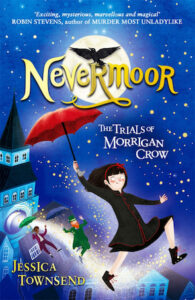 I’m reading some harrowing books at the moment, so Jessica Townsend’s Nevermoor: The Trials of Morrigan Crow (21 of 52) was a wonderful, magical joy to dive in to. It’s the first in the Nevermoor trilogy (with another trilogy or two to come, yay!) that’s been compared to Harry Potter. It’s not *like* HP, but the world is just as immersive, the characters just as engaging, and the premise just as enchanting…
I’m reading some harrowing books at the moment, so Jessica Townsend’s Nevermoor: The Trials of Morrigan Crow (21 of 52) was a wonderful, magical joy to dive in to. It’s the first in the Nevermoor trilogy (with another trilogy or two to come, yay!) that’s been compared to Harry Potter. It’s not *like* HP, but the world is just as immersive, the characters just as engaging, and the premise just as enchanting…
“Morrigan Crow is cursed. Born on an unlucky day, she is blamed for all local misfortunes, from hailstorms to heart attacks – and, worst of all, the curse means that Morrigan is doomed to die at midnight on Eventide.
But as Morrigan awaits her fate, a strange and remarkable man named Jupiter North appears. Chased by black-smoke hounds and shadowy hunters on horseback, he whisks her away into the safety of a secret, magical city called Nevermoor…”
This had been waiting for me on my bookshelf for a long time, so I’m glad Jessica’s upcoming talk at the Sydney Writers Festival finally brought it to the top of my tbr list!
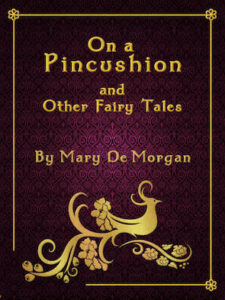 The Australian Fairy Tale Society’s April stories were The Nightingale by Hans Christian Andersen and The Toy Princess by Mary de Morgan, which have similar themes and are equally beautiful and magical. I especially love the latter, which is available in Mary’s 1877 faery tale collection On A Pincushion, a wonderful collection of feminist faery tales, and was also beautifully retold by Kate Forsyth, and enchantingly illustrated by Lorena Carrington, in their Vasilisa the Wise collection. Mary’s fascinating life as a suffragette, writer, storyteller, teacher, activist and member of the inspired and inspiring pre-Raphaelites in the mid-nineteenth century added lots to our discussion too, and I especially love the ending of this one – although some people don’t, because the MC chooses love and happiness over being a princess, ha ha! And The Nightingale is lovely too, about the power and spirituality of nature…
The Australian Fairy Tale Society’s April stories were The Nightingale by Hans Christian Andersen and The Toy Princess by Mary de Morgan, which have similar themes and are equally beautiful and magical. I especially love the latter, which is available in Mary’s 1877 faery tale collection On A Pincushion, a wonderful collection of feminist faery tales, and was also beautifully retold by Kate Forsyth, and enchantingly illustrated by Lorena Carrington, in their Vasilisa the Wise collection. Mary’s fascinating life as a suffragette, writer, storyteller, teacher, activist and member of the inspired and inspiring pre-Raphaelites in the mid-nineteenth century added lots to our discussion too, and I especially love the ending of this one – although some people don’t, because the MC chooses love and happiness over being a princess, ha ha! And The Nightingale is lovely too, about the power and spirituality of nature…
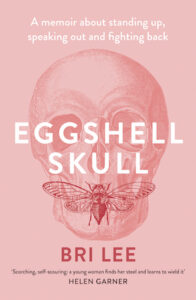 My fourth April read was the devastating, powerful, heartbreaking, wisdom-filled and important book Eggshell Skull (23 of 52) by Bri Lee, who’s qualified to practice law, but does not. Her insight into the legal system is horrifying, told partly from the point of view of an associate’s year with her judge and the soul-destroying cases they oversaw every day, and partly as a survivor and victim herself. The writing is beautiful, and brutally honest, and I am in awe of Bri’s bravery, and her commitment to continue holding her abuser to account at great personal cost, not just for her sake, but for the other women her assailant had affected, and for all the other women who don’t have her ability and strength and education to fight back and have their voice heard. It’s horrifying, and I cried at the injustice, and Bri’s sweet candour, but I’m glad I read it. I wish everyone would, because it explains a lot about the cycle of abuse, the silencing of victims and the attitudes so many still hold.
My fourth April read was the devastating, powerful, heartbreaking, wisdom-filled and important book Eggshell Skull (23 of 52) by Bri Lee, who’s qualified to practice law, but does not. Her insight into the legal system is horrifying, told partly from the point of view of an associate’s year with her judge and the soul-destroying cases they oversaw every day, and partly as a survivor and victim herself. The writing is beautiful, and brutally honest, and I am in awe of Bri’s bravery, and her commitment to continue holding her abuser to account at great personal cost, not just for her sake, but for the other women her assailant had affected, and for all the other women who don’t have her ability and strength and education to fight back and have their voice heard. It’s horrifying, and I cried at the injustice, and Bri’s sweet candour, but I’m glad I read it. I wish everyone would, because it explains a lot about the cycle of abuse, the silencing of victims and the attitudes so many still hold.
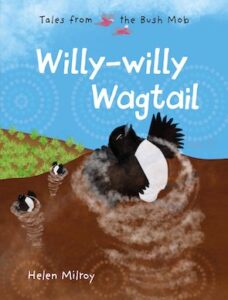 Tales from the Bush Mob (24 of 52), is a gorgeous series by awesome First Nations author Helen Milroy, about a group of Australian animals who manage to overcome their differences by working together to solve problems. The Bush Mob live in the Outback, and have adventures together while solving problems and looking after each other – but it wasn’t always like this.
Tales from the Bush Mob (24 of 52), is a gorgeous series by awesome First Nations author Helen Milroy, about a group of Australian animals who manage to overcome their differences by working together to solve problems. The Bush Mob live in the Outback, and have adventures together while solving problems and looking after each other – but it wasn’t always like this.
As detailed in the first book, Willy-Willy Wagtail, long ago all the animals spoke different languages, so they couldn’t communicate, and many fights ensued. But then sweet little Willy Wagtail decided to learn all the languages, so she could understand everyone, listen to their stories, and help those in need. When a bushfire threatens their home, it’s up to Willy to work out how they can all escape, and it’s her ingenuity, leadership and courage that saves them all – but who will save her? It’s a beautiful book, vividly illustrated, of friendship, perseverance, and getting along with others despite your differences.
In the second book, The Emu Who Ran Through the Sky, a young emu, Lofty, wants to win a race, but he’s too slow and clumsy. He begs his friends to teach him to fly, to no avail, but a clever invention from Platypus may finally give him a chance. Beautifully illustrated by Helen, the stories highlight the importance of courage, perseverance and wisdom, as well as friendship, cooperation, and respect for First Nations culture and country.
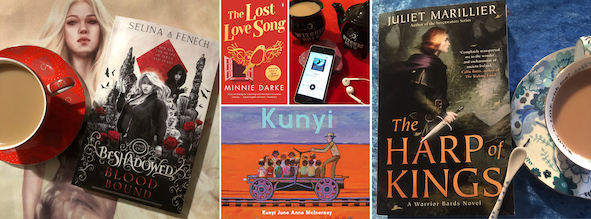


Get Social